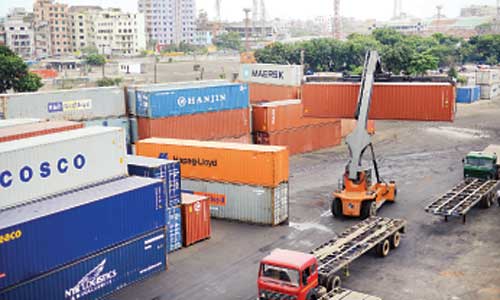Current customs tariff structure inept, business unfriendly: FBCCI study
The existing customs tariff structure in the country is inefficient and unfriendly to business as there are overlapping in import duty rates and faulty categorisation of raw materials, intermediate and finished goods in the structure, an FBCCI study report said.
The Federation of Bangladesh Chambers of Commerce and Industry in the report of its study on ‘Rationalisation of Customs Tariff Structure’ has made a number of recommendations including regrouping of the existing categories of imported goods and restructuring of duty rates to make the tariff system pragmatic, efficient and business friendly.
In the existing structure, many basic raw materials fall under high duty rates while many finished consumer goods fall under low duty rates that is against the principle of tariff system of the country, the report said.
The report has recommended that the National Board of Revenue set regulatory duty at import stage at 25 per cent for most of the products, raising it from the existing 4 per cent on import of products which are now subject to pay supplementary duty to compensate revenue loss and ensure protection of domestic industry in the new value-added tax regime from July next when there would be no SD on import of the most items.
FBCCI, the apex trade body of the country, has conducted the study for making its recommendations on customs duty for the coming national budget.
The findings of the study have already been submitted to finance minister Abul Maal Abdul Muhith and the National Board of Revenue for consideration in the budget for the fiscal year of 2016-17.
‘In sum, this study provides a blend of proposals to strike a balance between the conflicting interests of revenue earnings maximisation, growth of domestic industry, and promotion of investment through simplification of tariff regime,’ the report said.
According to the study, the NBR would be able to earn additional net revenue Tk 1,374.96 crore if it accepts the proposals of rationalisation of duty structure.
In its estimation, the net loss of the NBR would stand at Tk 1,213.04 crore if it accepts the FBCCI-proposed customs tariff structure while it would earn additional Tk 2,588 crore if the regulatory duty is increased as suggested by the trade body.
The FBCCI has proposed five categories for imposition of import duty.
The categories include essential commodities and products, capital machinery and spares, raw materials (both basic and intermediate) that do not have domestic production, raw materials (both basic and intermediate) that have domestic production and finished products and final consumer goods.
It has also suggested restructuring the customs duty rates to zero per cent for essential commodity group, 1 per cent for capital machinery, 3 per cent for basic raw materials and intermediate goods that do not have domestic production.
The NBR should set customs duty on import of basic raw materials and intermediate goods that have domestic production at different rates of 3 per cent, 10 per cent and 25 per cent based on the nature of the products and 25 per cent for finished goods.
Currently, products are categorised into four groups that include capital machinery and spares, basic raw materials, intermediate raw materials and finished products and final consumer goods and duty rates for the categories are 1 per cent, 5 per cent, 10 per cent and 25 per cent respectively.
‘But the average import duty on basic raw materials has been found 8.71 per cent instead of the applicable 5 per cent as many basic raw materials face customs duty at the rates up to 25 per cent under the existing faulty categorisation,’ the report said.
The average customs duty on intermediate products is 11.22 per cent instead of the applicable 10 per cent while the average duty for finished goods is 19.64 per cent instead of the applicable 25 per cent because of the above mentioned reason, it said.
The FBCCI has proposed that the NBR increase the regulatory duty to 25 per cent for 1, 245 tariff lines and to 15 per cent for 52 tariff lines from the current 4 per cent both to compensate revenue loss and to provide a respite to domestic industry from the loss of protection in the wake of contemplated withdrawal of SD under the new VAT and SD act.
News Courtesy: www.newagebd.net











